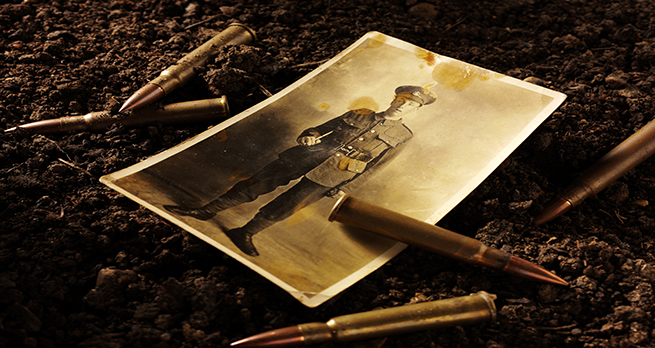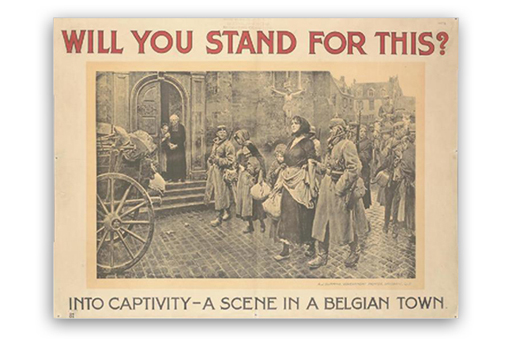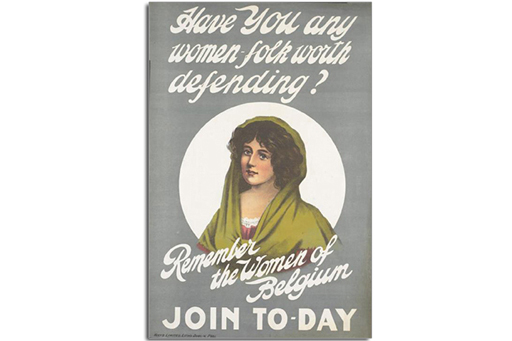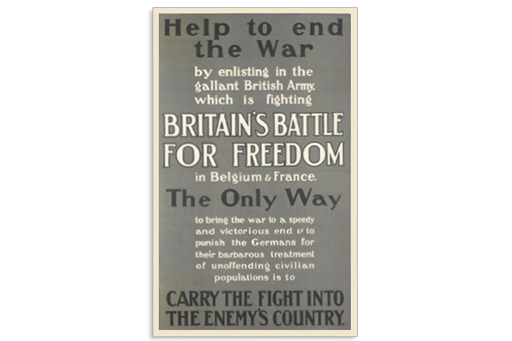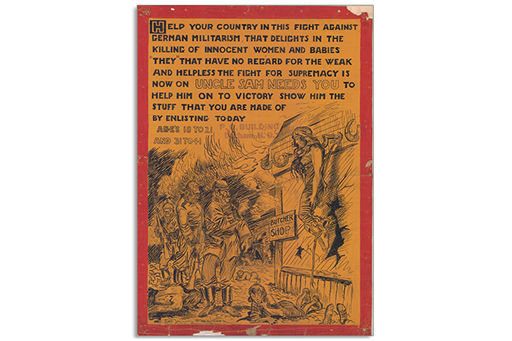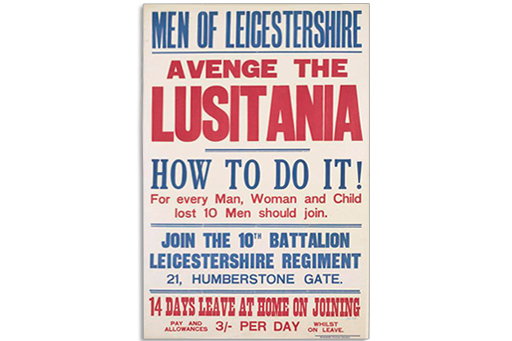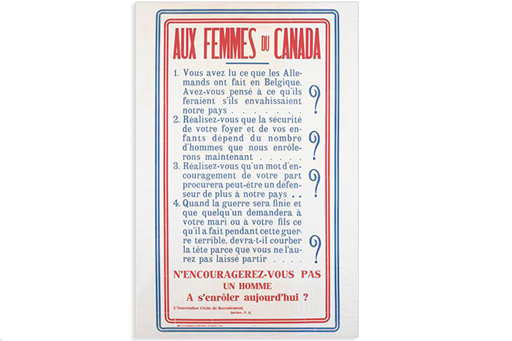2.1.5 Propaganda
Acts of brutality against civilians, both real and imagined, were a perfect vehicle for propaganda against the enemy. Allied propagandists, particularly in Britain, exploited stories of Germany’s ruthless behaviour to provide a moral justification for the war effort. These posters are examples of this. All of these images and others can also be found at the Europeana collections website [Tip: hold Ctrl and click a link to open it in a new tab. (Hide tip)] .
This recruitment poster was made in Brisbane, Australia (no date is given). Australia was a British dominion during the First World War, and Australian men – many of whom had been born in Britain – voluntarily enlisted in large numbers to fight on behalf of the British Empire. Recruitment posters like these highlighted German atrocities against civilians in Belgium and fostered moral outrage in order to promote enlistment. This poster uses a photograph of German soldiers rounding up Belgian civilians and allegedly leading them into captivity.
Many recruitment posters, like this one – made in Dublin, Ireland in 1915 – encouraged enlistment by alluding to the atrocities committed against women. It is implied here that by joining up to fight, men would not only come to the rescue of innocent female victims abroad, but would also be protecting their wives back home.
This English recruitment poster – made in Harrow, Middlesex in 1915 – makes specific reference to German atrocities, portraying the war as a moral crusade and an opportunity to ‘punish’ the Germans for their actions.
Although the USA didn’t join the war until 1917, American propagandists also highlighted German atrocities in order to encourage enlistment. This poster – made in Durham, North Carolina in 1918 – employs a particularly vivid sketch of a woman being shot while hanging from a meathook.
This English recruitment poster – made in Leicester in 1915 – draws attention to the German sinking of the Lusitania in May 1915, a passenger ship that was carrying numerous civilians between New York and Liverpool. The poster encourages men to avenge the sinking, while also highlighting the benefits of enlisting.
Like Australia, Canada was a British dominion during the war, and Canadian men were encouraged to enlist in large numbers. This poster, made in Quebec, appeals to French-Canadian women, urging them to encourage their menfolk to enlist. Again, a reference to German atrocities is used to inspire moral outrage. It reads as follows:
- You’ve read about what the Germans did in Belgium. Have you thought about what they would do if they invaded our country … ?
- Do you realise that the safety of your home and your children depends on the number of men we enlist now … ?
- Do you realise that a word of encouragement from you will perhaps procure one more defender for our country … ?
- When the war is over and someone asks your husband or your son what he did during this terrible war, will he have to hang his head because you didn’t let him go…?
Won’t you encourage a man to enlist today?
